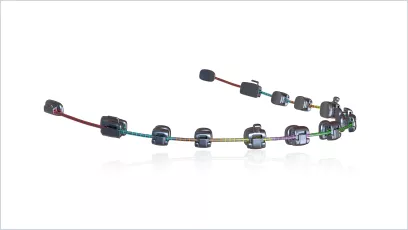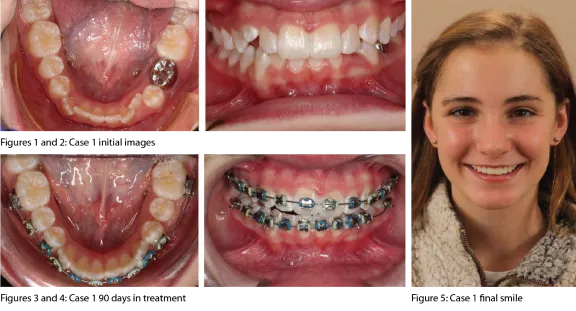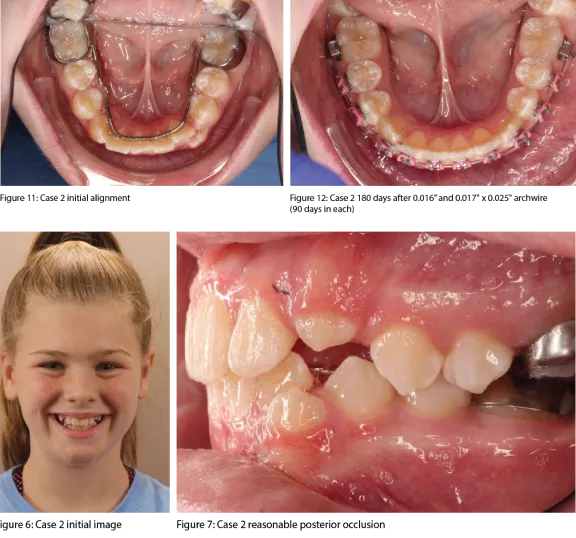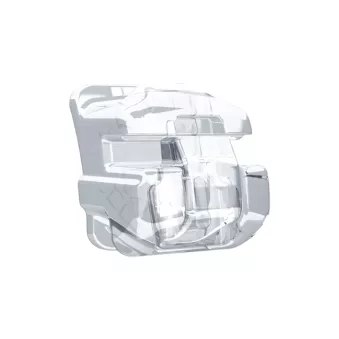Advancing Orthodontic Treatment with SmartArchTM Multi-Force Archwires.

Orthodontics has witnessed remarkable advancements in treatment modalities over the past two decades, and superelastic archwires have emerged as a key component of modern orthodontic practices. These archwires, predominantly composed of nickel-titanium materials, have played a pivotal role in orthodontic treatment due to their unique properties. However, while these archwires have been effective, they are not without limitations. One significant challenge is the uniformity of force delivery across the dental arch, which may not cater to the diverse force requirements of different teeth. This document explores the evolution of superelastic archwires, introduces the concept of SmartArch multi-force archwires, and provides insights from clinical studies and case examples to highlight the advantages of this innovative technology.
The Evolution of Superelastic Archwire Technology
For over two decades, orthodontic practitioners have relied on superelastic archwires as a fundamental component of their treatment plans. These archwires have been primarily constructed from nickel-titanium materials, which possess unique properties, including superelasticity and resistance to permanent deformation. These characteristics make them an ideal choice for orthodontic applications. However, a critical limitation of traditional superelastic archwires is their uniformity in force delivery across the dental arch.
This uniformity becomes an issue when considering the heterogeneity of teeth in terms of size, position, and resistance to movement. For instance, the periodontal ligament (PDL) surface area of a maxillary lateral incisor is significantly smaller than that of a maxillary first molar. Consequently, the force required to move these teeth varies considerably. While superelastic archwires provide appropriate forces for some teeth, they may not deliver optimal forces for others, resulting in inefficient movement and potential complications such as root resorption, particularly in susceptible teeth like maxillary lateral incisors.
Introducing SmartArch Multi-Force Archwires
Recent advancements in orthodontic technology have led to the development of a groundbreaking solution: SmartArch multi-force archwires. These archwires represent a paradigm shift in orthodontic treatment by introducing the concept of personalized force delivery to each tooth in the arch.
Imagine an archwire that is "programmed" to deliver loads tailored to the specific requirements of each tooth. For instance, a lighter force for delicate lateral incisors and a more substantial force for resilient molars. This vision underpins the development of SmartArch multi-force archwires. These archwires are crafted using innovative techniques, such as pulsed fiber laser conditioning, applied to shape memory alloy (SMA) wires like copper-nickel-titanium (CuNiTi).
The defining feature of SmartArch archwires is their ability to precisely program narrow transition zones with numerous superelastic unloading profiles within a single CuNiTi wire. In essence, this technology aims to deliver precisely the right amount of force for each tooth, optimizing movement efficiency while minimizing trauma to the PDL.
Clinical Studies: Demonstrating the Superiority of SmartArch
To assess the effectiveness of SmartArch multi-force archwires, clinical studies have been conducted:
Study A: In this study, a single 0.016" Ormco SmartArch™ laser-engineered CuNiTi wire was evaluated. Results demonstrated that this wire produced 25% faster treatment progress (143 vs. 180 days for controls) and achieved over 56% more efficient initial alignment. This efficiency was attributed to reduced residual discrepancies, improved correction of deep bites, and a reduction in the curve of Spee.
Study B: Another study examined the performance of two SmartArch wires (0.016" for 111 days followed by 0.017" x 0.025" for 87 days). The archwires successfully corrected axial inclinations in three dimensions to near ideal alignment, with cast discrepancies measuring less than 29 points. Comparatively, conventional treatment with routine CuNiTi and stainless steel archwires typically takes around six months to align a crowded lower arch. Thus, SmartArch archwires demonstrated their superior effectiveness, particularly for correcting malocclusions with a deep bite exceeding 3mm, which accounts for over 75% of all malocclusions in the sample.
Why SmartArch Archwires Are Rapid and Efficient for Tooth Movement
The efficiency of SmartArch archwires is attributed to their ability to optimize the load, specifically the moment-to-force ratio, for individual teeth. While all archwire activations result in some degree of PDL necrosis when initially engaged, SmartArch minimizes this by requiring only one archwire change during treatment, which occurs when the rectangular SmartArch is installed. As a result, gentle continuous force is employed throughout treatment, minimizing PDL necrosis.
SmartArch archwires are designed to be stiffer in the posterior segments of the arch, where molars, with their larger PDL/bone interfaces, are situated. This stiffness in the posterior ensures that anterior crowding is corrected simultaneously with gentle force, providing efficient alignment while using the same archwire.
Case Examples: Realizing the Efficiency of SmartArchTM
Case 1: A 12-year-old patient with a moderate Class II deep bite malocclusion was included in the initial study group using 0.016" SMA SmartArch. The treatment involved bonding brackets and placing the 0.016" archwire, and an impressive alignment was achieved within 90 days. The photographs depicted excellent alignment of the lower arch, with significant overcorrection of the bite opening. This case illustrates the remarkable efficiency of SmartArch in achieving optimal tooth movement and patient comfort within a short timeframe.

Case 2: Another 12-year-old girl with severe crowding was referred for consultation due to her challenging dental condition. The case involved a mandibular left canine that was entirely blocked out during transitional dentition. After a lingual arch was used to maintain leeway space, significant crowding remained. The treatment plan included the use of 0.016" SMA SmartArch archwires following biomimetic grafting to reinforce periodontal root structure. Within 180 days of initiating treatment and utilizing two archwires, substantial changes were observed, showcasing the efficiency of SmartArch in addressing complex cases.

In conclusion, SmartArch multi-force archwires represent a monumental advancement in orthodontic treatment. These archwires address the limitations of traditional superelastic archwires by offering personalized force delivery to each tooth in the arch. Clinical studies have unequivocally demonstrated the superior efficiency of SmartArch archwires in comparison to conventional archwires, particularly for correcting deep bite malocclusions. The reduced treatment time, minimal PDL necrosis, and ability to engage both anterior and posterior teeth efficiently make SmartArch a game-changing technology in orthodontics. As practitioners look to optimize patient outcomes and streamline treatment, SmartArch archwires emerge as a revolutionary solution that sets a new standard for orthodontic care. Embracing this innovative technology marks a significant step toward achieving precision, efficiency, and enhanced patient satisfaction in orthodontics.


